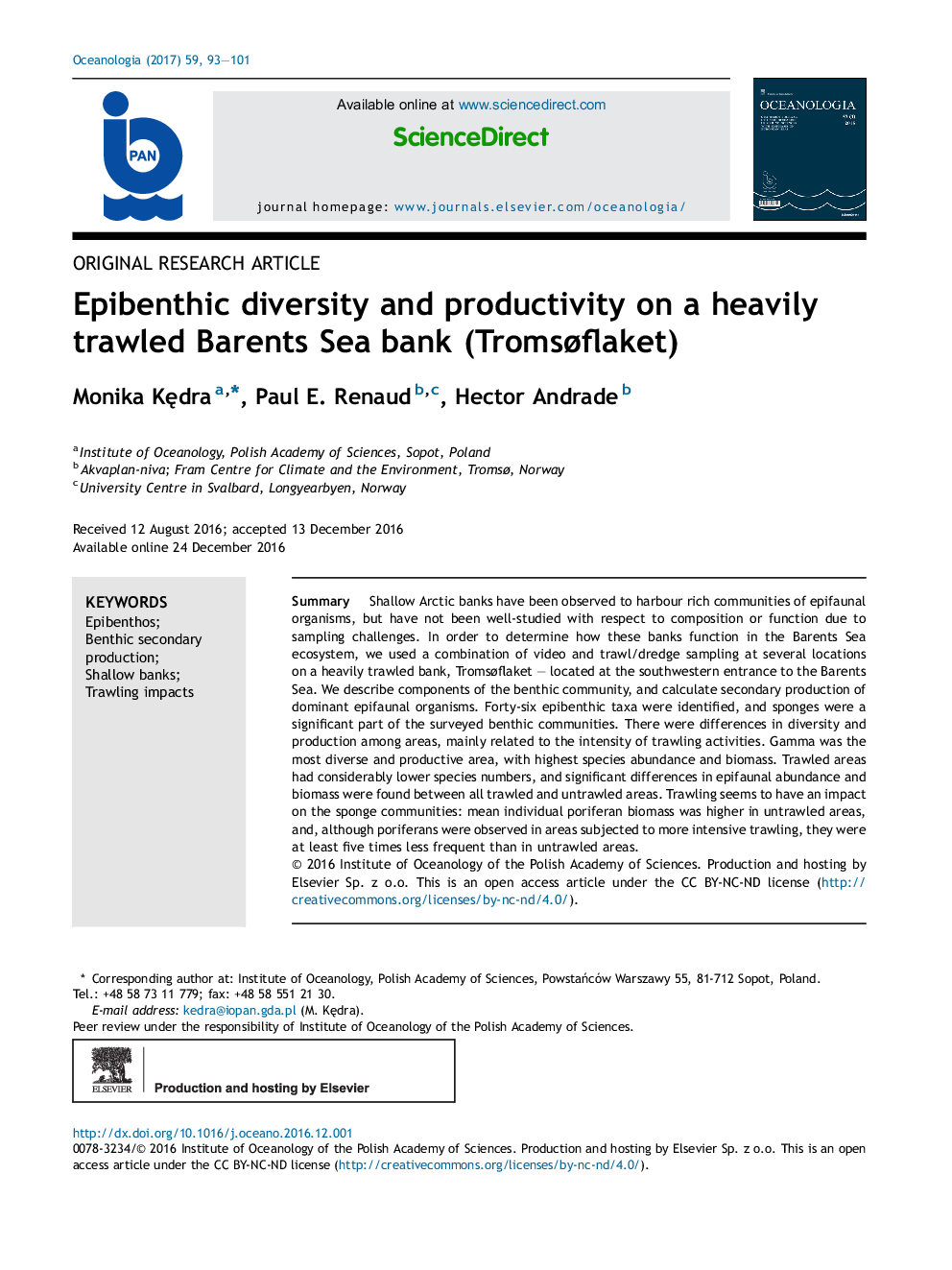| Article ID | Journal | Published Year | Pages | File Type |
|---|---|---|---|---|
| 5519749 | Oceanologia | 2017 | 9 Pages |
SummaryShallow Arctic banks have been observed to harbour rich communities of epifaunal organisms, but have not been well-studied with respect to composition or function due to sampling challenges. In order to determine how these banks function in the Barents Sea ecosystem, we used a combination of video and trawl/dredge sampling at several locations on a heavily trawled bank, Tromsøflaket - located at the southwestern entrance to the Barents Sea. We describe components of the benthic community, and calculate secondary production of dominant epifaunal organisms. Forty-six epibenthic taxa were identified, and sponges were a significant part of the surveyed benthic communities. There were differences in diversity and production among areas, mainly related to the intensity of trawling activities. Gamma was the most diverse and productive area, with highest species abundance and biomass. Trawled areas had considerably lower species numbers, and significant differences in epifaunal abundance and biomass were found between all trawled and untrawled areas. Trawling seems to have an impact on the sponge communities: mean individual poriferan biomass was higher in untrawled areas, and, although poriferans were observed in areas subjected to more intensive trawling, they were at least five times less frequent than in untrawled areas.
